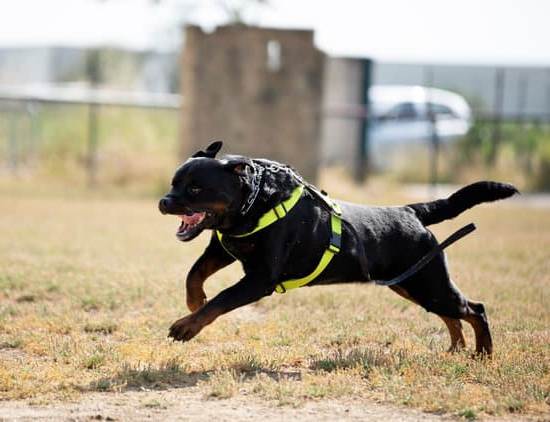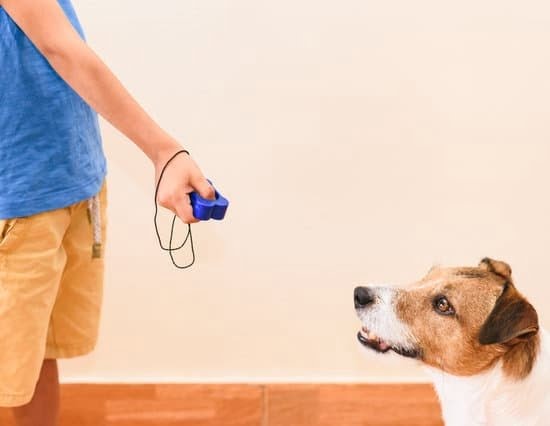Dogs are intelligent and complex animals that require proper training to ensure they become well-behaved and happy companions. However, there may be various misconceptions about the most effective training techniques.
One such belief involves the idea of barking and growling at your dog as a way to establish dominance and encourage obedience. In this article, we will delve into the psychology behind barking and growling in dog training, exploring whether these actions truly help in shaping your furry friend’s behavior.
When it comes to understanding the effectiveness of barking and growling as training techniques, it is crucial to debunk common myths surrounding this approach. Many people believe that by mimicking these sounds, they are communicating with their dogs in a way that establishes authority. However, research suggests otherwise. This section aims to shed light on why barking and growling may not be as effective as other methods when it comes to training dogs.
Furthermore, it is important to consider the potential negative consequences associated with using barking and growling in dog training. While some proponents argue that these vocalizations can communicate an intent or assert dominance, it is essential to recognize that such approaches can lead to anxiety, fear, and aggression in dogs. As responsible pet owners, understanding these potential drawbacks can help us make informed decisions about how we train our dogs effectively while ensuring their emotional well-being remains intact.
Debunking the Myth
Barking and growling are common vocalizations that dogs use to communicate various emotions or intentions. Some trainers and dog owners believe that barking and growling at their dogs can be effective training techniques, using them as a way to assert dominance or establish control. However, this approach is not only ineffective but can also have negative consequences on the dog’s well-being and the overall success of training.
Understanding Canine Behavior
To understand why barking and growling are ineffective as training techniques, it is important to delve into the psychology behind canine behavior. Dogs primarily bark and growl to communicate, express their needs or fears, seek attention, or warn of potential threats. When trainers bark or growl at their dogs, they may inadvertently confuse or intimidate them.
While it is true that dogs respond to vocal cues given by humans, they are more likely to associate these cues with negative emotions rather than understanding them as instructions for specific behaviors. This means that instead of learning what they should do, dogs may become fearful, anxious, or even aggressive when frequently exposed to loud vocalizations.
Psychological Impact on Dogs
Using barking and growling as training techniques can result in adverse effects on a dog’s psychological well-being. Dogs may develop fear-based behaviors or become stressed due to the constant exposure to intimidating vocalizations. These negative emotional states hinder learning and can lead to long-term behavioral problems such as fear aggression or generalized anxiety.
Furthermore, this approach damages the trust between the dog and trainer. A dog who associates its trainer with fear-inducing experiences is less likely to engage willingly in future training sessions or show enthusiasm for learning new commands. Ultimately, using barking and growling as training tools undermines the goal of building a strong bond between the trainer and their dog, which is essential for successful training outcomes.
Effective Training Alternatives
Fortunately, there are numerous positive and effective alternatives to barking and growling as training techniques. Positive reinforcement is widely recognized as one of the most successful and humane methods of training. This approach involves rewarding desirable behaviors with treats, praise, or play, which encourages dogs to repeat those behaviors in the future.
Another alternative is clicker training, where a trainer uses a clicker to mark the moment a dog performs a desired behavior followed by a reward. This method allows for clear communication between the trainer and dog and helps the dog understand exactly what they did right.
Overall, debunking the myth that barking and growling are effective training techniques is crucial for promoting kind and efficient training methods. By understanding canine behavior, acknowledging the negative consequences of these techniques, and exploring more positive alternatives, trainers can build trust, strengthen bonds, and nurture happy and well-behaved dogs.
The Potential Negative Consequences of Barking and Growling at Your Dog
Dog owners may be tempted to resort to barking and growling at their dogs as a training technique, but it is important to understand the potential negative consequences of this approach. While it may seem like a quick and easy way to assert dominance or establish authority, it can actually harm the well-being and relationship between you and your furry friend.
Creating Fear and Anxiety
One of the most significant negative consequences of barking and growling at your dog is the potential for creating fear and anxiety. Dogs are highly sensitive animals that can easily become distressed by aggressive or threatening behavior. When a dog is consistently subjected to intimidating vocalizations, they may develop feelings of fear towards their owner or other people.
This fear can manifest in various ways, such as cowering, trembling, or aggression, which can lead to further behavioral issues. A fearful dog may become defensive and potentially lash out in an attempt to protect themselves. As a pet owner, it is crucial to prioritize your dog’s emotional well-being rather than using fear-based tactics.
Undermining Trust and Bond
Another consequence of using barking and growling as training techniques is the potential damage it can cause to the bond and trust between you and your dog. Dogs rely on their owners for love, care, and safety. When an owner uses aggressive methods such as barking or growling, it undermines the trust that has been built.
A dog that does not feel secure in its relationship with its owner may become more disobedient or reluctant to follow commands. The loss of trust can also hinder effective communication between you and your dog, making future training sessions more challenging.
Aggravating Behavior Problems
Using barking and growling as training techniques can also aggravate existing behavior problems in dogs. If a dog already exhibits signs of aggression or anxiety, resorting to intimidation tactics will only escalate the problem. Reactive behaviors, such as leash aggression or resource guarding, can worsen when a dog feels threatened or frightened.
It is essential to address these behavior problems using positive reinforcement and reward-based training methods. Consulting with a professional dog trainer or animal behaviorist can provide valuable guidance on how to modify and manage problematic behaviors effectively.
Exploring the Distinction
The Role of Vocalizations in Canine Communication
One important aspect to consider when training a dog is understanding the role of vocalizations as a form of communication. Dogs use barking and growling to express their feelings, needs, and wants. By vocalizing, dogs are able to communicate with humans and other animals, indicating various emotions such as fear, aggression, excitement, or playfulness. It is crucial for pet owners to recognize that barking and growling are not solely training tools, but rather essential forms of communication for dogs.
The Limitations of Barking and Growling as Training Techniques
While it may be tempting to resort to barking and growling as methods of training a dog, it is important to acknowledge the limitations of these techniques. In fact, using aggressive or intimidating vocalizations can have detrimental effects on a dog’s behavior and overall well-being. Barking and growling can further increase anxiety or fear in dogs, potentially leading to behavioral issues such as increased aggression or reactivity.
Using vocalizations as training tools can also be confusing for dogs. Dogs rely on consistency and clear communication from their owners during training sessions. When barking or growling is used inconsistently or without clear cues, it can be difficult for dogs to understand what behaviors they are being rewarded or punished for. This can result in confusion and frustration for both the pet owner and the dog.
Promoting Positive Training Techniques
Instead of relying on barking and growling as training techniques, it is recommended to focus on positive reinforcement methods. Positive reinforcement involves rewarding desired behaviors instead of punishing undesired ones. This approach helps foster a positive learning environment where dogs feel safe, understood, and motivated to engage in desired behaviors.
Reward-based training techniques include using treats, toys, praise, or affection as rewards when a dog exhibits the desired behavior. By associating positive outcomes with the desired behavior, dogs are more likely to repeat it. This creates a strong bond and mutual understanding between the pet owner and the dog.
Positive Reinforcement
When it comes to training your dog, positive reinforcement techniques have shown to be far more effective than methods involving barking and growling. Rather than resorting to intimidating or aggressive tactics, using positive reinforcement not only helps in shaping desired behaviors but also strengthens the bond between you and your furry companion.
One of the most widely-used methods of positive reinforcement is known as operant conditioning. This technique involves rewarding your dog for exhibiting desirable behaviors, which encourages them to repeat those actions in the future. Rewards can come in the form of treats, praise, toys, or any other positive stimuli that motivates your dog.
To effectively use positive reinforcement in training, it is important to set clear expectations and establish a consistent routine. Start by identifying the specific behaviors you want to reinforce and choose a signal or command that is easy for your dog to understand. For example, if you want your dog to learn how to sit on command, combine the verbal cue “sit” with a hand gesture.
Once you have established the desired behavior and its associated cue, reward your dog immediately after they perform the action correctly. This reinforces the connection between the behavior and the reward. Consistency is key during this process – always reward your dog for correct responses and withhold rewards for incorrect actions.
In addition to operant conditioning, another effective alternative to barking and growling in dog training is clicker training. Clicker training utilizes a small handheld device that makes a distinct clicking sound when pressed. The click serves as a marker for precise timing of correct behaviors. By pairing this sound with rewards like treats or playtime, dogs quickly learn to associate the click with positive outcomes.
By embracing positive reinforcement techniques such as operant conditioning and clicker training, you can create a harmonious environment where learning becomes enjoyable for both you and your furry friend. Remember, building trust and respect through positive training methods will ultimately result in a well-behaved and happy dog.
Essential Training Techniques
When it comes to training your dog, building a strong bond and mutual understanding is essential. By establishing a positive relationship with your furry friend, you can create a foundation for successful training. This section will explore some key techniques that can help you develop this bond and understanding with your canine companion.
One important technique is consistency. Dogs thrive on routine and predictability, so it’s important to establish consistent rules and expectations. This means using the same commands and cues consistently, as well as sticking to a regular training schedule. By being consistent in your interactions with your dog, they will come to understand what is expected of them and feel more secure in their environment.
Another crucial aspect of developing a strong bond with your dog is positive reinforcement. Rewarding desired behaviors with treats, praise, or playtime helps reinforce these behaviors and strengthens the bond between you and your pet. Positive reinforcement has been shown to be more effective than punishment-based techniques in dog training, as it fosters trust and encourages your dog to willingly engage in learning.
Lastly, communication plays a vital role in building mutual understanding with your dog. While dogs don’t understand our spoken language, they are highly attuned to body language and vocal tone. By observing and responding appropriately to your dog’s body language, you can effectively communicate with them and understand their needs and emotions better.
In summary, developing a strong bond and mutual understanding with your dog is crucial for successful training. Consistency, positive reinforcement, and effective communication are essential techniques that can help strengthen this bond. By implementing these techniques into your training routine, you can establish a solid foundation for a happy and well-behaved canine companion.
| Technique | Description |
|---|---|
| Consistency | Establish consistent rules and expectations for your dog, including using the same commands and cues consistently. |
| Positive Reinforcement | Reward desired behaviors with treats, praise, or playtime to reinforce them and strengthen the bond between you and your dog. |
| Effective Communication | Observe your dog’s body language and respond appropriately to effectively communicate and understand their needs and emotions. |
Understanding Canine Body Language
As dog owners, it is crucial to understand that our furry friends communicate primarily through body language. Being able to read and interpret their signals can greatly enhance our ability to train them effectively. This section will delve into the importance of understanding canine body language and how it can contribute to successful training.
Canine body language is a complex system of signals that dogs use to convey their emotions, intentions, and needs. By observing their posture, facial expressions, tail position, and overall body movements, we can gain insight into what they are feeling or trying to communicate.
For example, a wagging tail does not always mean a dog is happy; it could also indicate excitement or nervousness. Understanding these nuances is essential for effective training because it allows us to assess their state of mind and tailor our approach accordingly.
To further illustrate the significance of understanding canine body language in training, let’s look at an example. Imagine you are teaching your dog a new command but notice that they start exhibiting signs of stress or anxiety, such as flattened ears or a tucked tail. By recognizing these cues, you can adjust your training approach to alleviate their discomfort and create a more positive learning experience.
In order to fully grasp canine body language and integrate it into training, owners should educate themselves on the various signals dogs use and what they mean in different contexts. It is essential to consult reputable resources such as books, trainers, or veterinarians who specialize in dog behavior. Additionally, paying close attention to your own dog’s specific body language cues will help you better understand their unique communication style.
| Canine Body Language Signal | Description |
|---|---|
| Relaxed Tail Wagging | A loose and wide wag from side to side indicates happiness and friendliness. |
| Flattened Ears | Ears pressed close to the head may indicate fear, anxiety, or submission. |
| Raised Fur/Hackles | When the hair along the back and neck stands up, it can signify aggression or arousal. |
| Paw Lifting | Lifting a paw gently can signal uncertainty or a desire to play. |
Building Trust and Respect
Building trust and respect is crucial in dog training, as it forms the foundation for a strong bond and effective communication between you and your furry companion. Using positive and reward-based training methods is not only more humane, but it also helps to foster this trust and respect while teaching your dog desired behaviors.
Positive reinforcement techniques involve rewarding your dog for good behavior, such as sitting or staying when commanded, with treats, praise, or playtime. This type of training method focuses on acknowledging desirable actions rather than punishing unwanted behaviors. It helps to motivate dogs by associating obedience with positive outcomes, making them more eager to please their owners.
One popular positive reinforcement technique is clicker training. This method uses a small handheld device that emits a distinct clicking sound. The clicker is paired with treats or rewards to communicate to the dog that they have performed the desired behavior correctly. Through consistent repetition, dogs learn to associate the sound of the clicker with receiving a reward, which encourages them to continue displaying the desired behavior.
Another effective method is known as “capturing.” This approach involves rewarding a dog spontaneously when they exhibit a desirable behavior naturally. For example, if your dog sits on their own accord, you would immediately praise them and offer a treat or toy. By capturing these moments of good behavior, you are reinforcing the action positively and increasing the likelihood of it being repeated.
Using reward-based training methods not only strengthens your relationship with your dog but also sets them up for long-term success by promoting an understanding of desired behaviors through positive associations. It also helps avoid any potential negative consequences that may arise from using barking and growling as training techniques.
How to Recognize and Address Behavioral Issues
Behavioral issues in dogs can be challenging to navigate, but with professional guidance, they can be effectively recognized and addressed. It is important to understand that dogs may exhibit various behavioral problems due to a range of factors such as fear, anxiety, or past trauma. Recognizing these issues early on is crucial in order to prevent them from escalating into more severe problems. Here are some guidelines for recognizing and addressing behavioral issues in your dog:
- Observe your dog’s behavior: Pay close attention to any unusual behaviors your dog may display. These could include excessive barking or growling, aggression towards people or other animals, destructive chewing, separation anxiety, or withdrawal from social interaction.
- Consult a professional trainer or behaviorist: If you notice problematic behaviors in your dog that you are unsure how to address, it is recommended to seek the help of a professional trainer or behaviorist who specializes in canine behavior. They have the knowledge and experience to assess your dog’s specific needs and provide guidance tailored to their individual situation.
- Implement targeted training techniques: The professional trainer or behaviorist will work with you to develop a customized training plan for your dog’s specific behavioral issues. This may involve positive reinforcement techniques, counter-conditioning exercises, desensitization methods, or other strategies designed to modify unwanted behaviors and promote positive ones.
- Address underlying causes: It is important not only to focus on addressing the immediate behavioral problems but also to identify and address any underlying causes contributing to these issues. This may involve creating a safe and enriching environment for your dog, managing their stress levels through exercise and mental stimulation, or addressing any potential health concerns.
Remember that addressing behavioral issues takes time and patience. Consistency is key when implementing the recommended strategies provided by a professional trainer or behaviorist. With dedication and proper guidance, it is possible to overcome these challenges and create a harmonious relationship with your furry friend.
Overall, recognizing and addressing behavioral issues in dogs requires professional guidance and a commitment to understanding and meeting your dog’s specific needs. By working closely with a trainer or behaviorist, implementing targeted training techniques, and addressing underlying causes, you can successfully address these challenges and build a strong bond with your dog based on trust and mutual understanding.
Moving Forward
After debunking the myth that barking and growling at your dog can effectively train them, it is important to explore alternative training techniques that are based on positive reinforcement. Positive reinforcement focuses on rewarding desired behaviors rather than punishing unwanted behaviors. By using rewards such as treats, praise, and playtime to reinforce good behavior, dogs are more motivated to repeat those behaviors in the future.
One effective technique is clicker training. Clicker training involves using a small handheld device that makes a distinct clicking sound when pressed. The sound of the clicker acts as a marker for correct behavior, signaling to the dog that they have done something right. This allows for precise timing of rewards and helps the dog understand which behaviors are being reinforced.
Another important aspect of positive training is incorporating regular training sessions into your routine. Consistency is key when it comes to teaching your dog new behaviors or reinforcing existing ones. Short, frequent sessions throughout the day are often more effective than long, sporadic ones. This helps keep your dog engaged and prevents them from becoming bored or overwhelmed.
It is also crucial to remember that individual dogs may respond differently to various training methods. What works for one dog may not work for another. It is important to observe and understand your own dog’s unique personality, preferences, and learning style to tailor their training experience accordingly.
By implementing positive training techniques like clicker training, incorporating regular sessions into your routine, and considering your dog’s individual needs, you can create an environment where your furry friend feels supported, understood, and motivated to learn. With patience, consistency, and love as the foundation of their training journey, you can help shape a well-behaved and happy dog who thrives in their role as part of your family unit.
Conclusion
In conclusion, it is evident that barking and growling at your dog is not an effective training technique. Debunking the myth behind this approach, research suggests that it does not yield positive results but rather has potential negative consequences on the dog’s behavior and overall well-being. Instead of using fear and intimidation, it is important to explore alternatives that rely on positive reinforcement.
Positive reinforcement techniques have proven to be more effective in training dogs. This involves rewarding desired behaviors with treats, verbal praise, or playtime, which helps to reinforce those behaviors. By focusing on rewarding good behavior rather than punishing unwanted behavior through barking and growling, you can develop a stronger bond and mutual understanding with your dog.
Understanding canine body language is also crucial in successful dog training. By observing their body posture, tail wagging pattern, ear position, and facial expressions, you can better comprehend their emotions and respond accordingly. This understanding allows for clear communication with your dog, leading to improved training outcomes.
Building trust and respect between you and your furry companion should be the foundation of any training method. Positive and reward-based approaches foster a loving environment where your dog feels safe to learn and make mistakes without fear of harsh punishments. By implementing these methods and seeking professional guidance when faced with behavioral issues, you can ensure a well-behaved and happy dog.
Frequently Asked Questions
Should you growl and bark at your dog?
Growling and barking at your dog is generally not recommended as a method of communication or discipline. While it may seem like a way to assert dominance or control, it can actually escalate aggression and fear in your dog.
Dogs are attuned to human emotions and responses, so growling and barking may confuse or intimidate them, potentially harming your bond with the animal. Instead, it is more effective to use positive reinforcement techniques to train and communicate with your dog.
Is it okay to growl back at your dog?
Growling back at your dog is not considered a favorable approach when it comes to addressing behavioral issues. This response can be interpreted by your dog as an invitation for further aggression or an escalation of their own behavior.
Mimicking a growl might also exacerbate any feelings of anxiety or fear that prompted the initial growling from your dog. To handle such situations better, focusing on understanding their underlying reasons for growling through training or seeking professional guidance would be more helpful.
Should I discipline my dog when he growls?
Disciplining a dog solely based on their growling should be carefully evaluated before taking action. Growling is often a sign that dogs are uncomfortable, fearful, or stressed about something in their environment.
Instead of punishing them for expressing this natural behavior, it’s crucial to address the underlying cause of their discomfort and work towards providing them with appropriate support and training. Attempting to discipline a growling dog without understanding the root cause may lead to increased anxiety or aggression in the long run, potentially worsening the situation rather than resolving it effectively.

Welcome to the blog! I am a professional dog trainer and have been working with dogs for many years. In this blog, I will be discussing various topics related to dog training, including tips, tricks, and advice. I hope you find this information helpful and informative. Thanks for reading!





